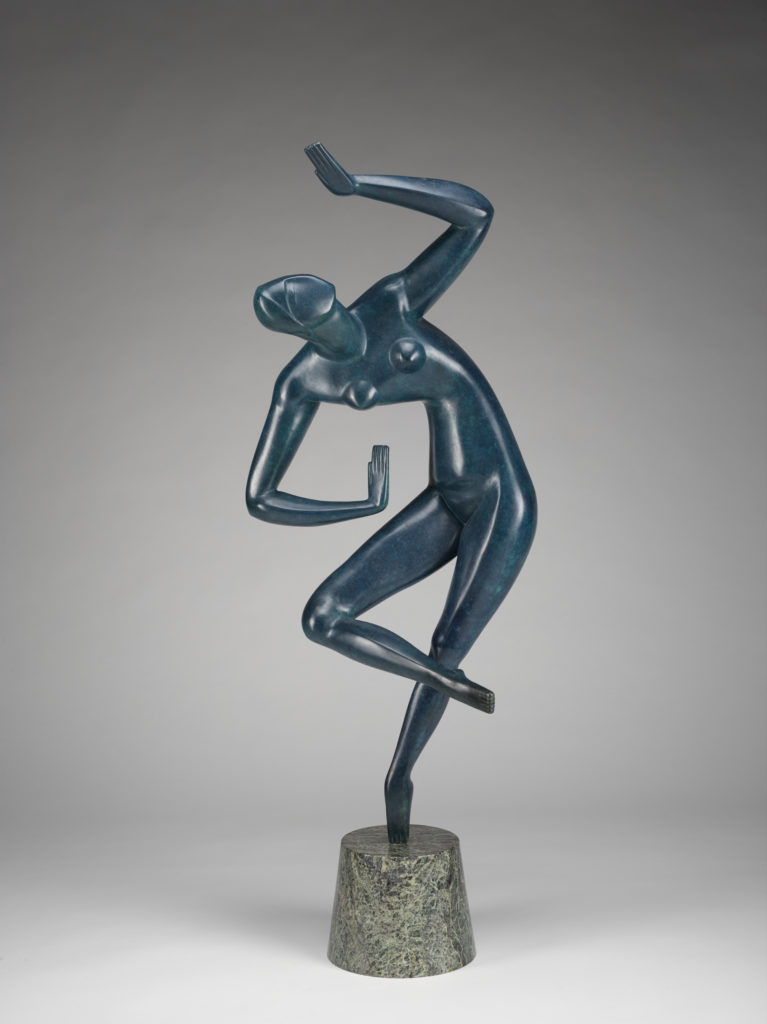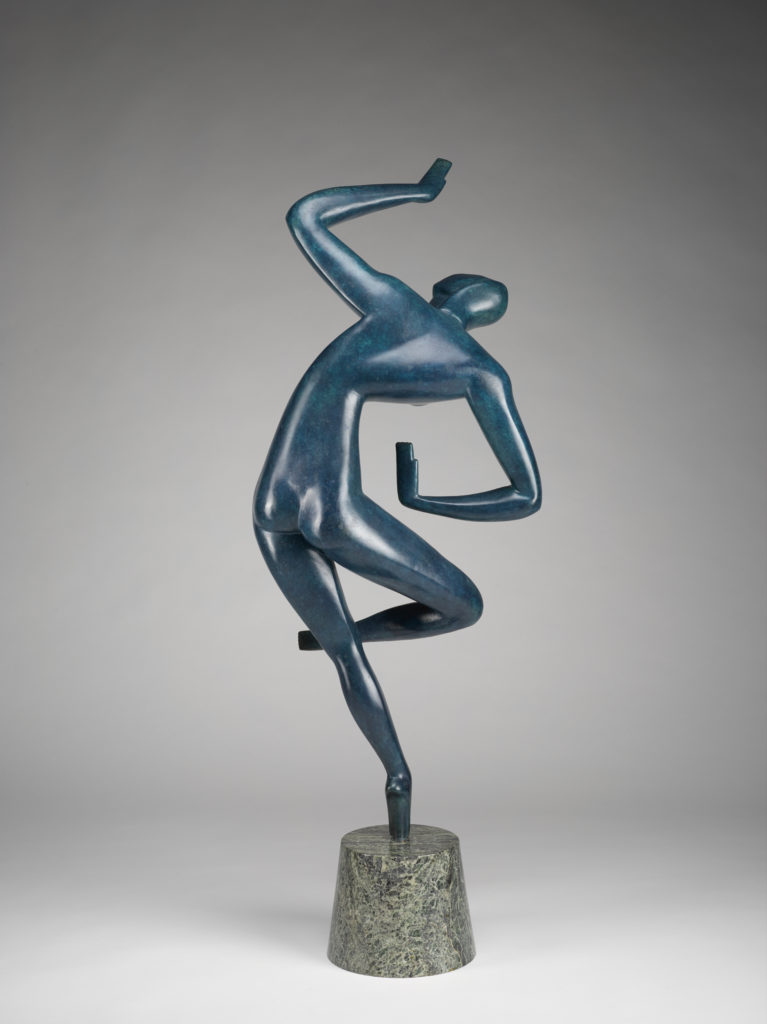Blue Dancer (work of art)
Artwork Info
Key Ideas
- The sharp angles and twisted position of this sculpture represent the energy and movement of dance. Many of Alexander Archipenko’s sculptures were inspired by the relationship between the body, space, and movement in dance.
- Archipenko was one of the first artists to use the abstract, geometric style of cubism in sculpture. Cubism is a 20th-century art style that breaks down and simplifies an object into geometric shapes.
- When the Nazis took control of Germany in the 1930s, they stole, sold, and destroyed thousands of works of art that didn’t fit with their values. This included many of Archipenko’s sculptures that were on display in German museums.
Learn More
Artist Alexander Archipenko changed the tradition of sculpting figures by simplifying and distorting the human body in order to create expressive sculptures. Archipenko was one of the first artists to use cubism in sculpture and architecture. Cubism is an art style in which artists break down objects into simplified geometric shapes and designs. This art style was created in the early 1900s by painters who did not want to follow the traditional approaches of making art look realistic. Cubism was first used in two-dimensional forms like painting and drawing, and it was made popular by artists like Pablo Picasso and George Braque.
Archipenko’s style of cubism can be seen in works like Blue Dancer, in which the angles of the figure capture the feeling of a dancer in motion. Dance was a common theme in his sculptures in the early 1900s. His interest in dance led him to explore the relationships between body, space, and movement in his work. Archipenko was also one of the first artists to focus on negative space in sculpture. Negative space is the empty space around and within a subject.
Archipenko spent his early adult life in France and Germany. He exhibited his work at the Salon des Indépendants, an annual art show in Paris in which the most famous artists in the area presented their work. He immigrated to the United States in the 1920s. Most of his works that were on display in Germany were taken in 1937 by Nazis who considered his art to be “degenerate” or immoral. One of the ways in which the Nazis tried to control Germany was by taking, selling, and destroying works of art that did not fit with their values.
Additional Resources
Resources for Teachers:
- Review a timeline of Archipenko’s life and explore his other sculptures.
- Watch a video about the Nazi campaign against “degenerate” art.
- Read an article about Archipenko’s unique art style and his inspirations.
Resources for Students:
- Watch a video about the history of cubism.
- Watch a video about how bronze sculptures like Blue Dancer are made.
- Read an article about positive and negative space and its role in art.


